Access More Boat Tests
Already have an account? Login
Eastward Boats Horizon 3000 (2019-)
2 x 250-hp Evinrude G2
Brief Summary
Eastward Boats has brought a proven power catamaran hull design from Kevlacat to America. With a history of use in search and rescue boats in Australia, it is now offered here with four layout options custom-built to buyer specs. We are reviewing the center console version powered with Evinrude E-TEC G2 250-hp outboards.
Key Features
• Center console
• All composite construction
• High-density Coosa foam core throughout
• Self-bailing cockpit
• Armstrong outboard brackets
Test Results
| RPM | MPH | Knots | GPH | MPG | NMPG | STAT. MILE | NM | dBa |
|---|---|---|---|---|---|---|---|---|
| 500 | 3.2 | 2.7 | 0.5 | 6.3 | 5.5 | 1701 | 1479.1 | 73 |
| 1000 | 5.9 | 5.1 | 1.3 | 4.5 | 3.9 | 1215 | 1056.5 | 74 |
| 1500 | 8.9 | 7.7 | 2.9 | 3.1 | 2.7 | 843 | 733.2 | 77 |
| 2000 | 11.6 | 10 | 5.7 | 2 | 1.8 | 547 | 475.7 | 83 |
| 2500 | 17.7 | 15.4 | 9 | 2 | 1.7 | 534 | 464.3 | 87 |
| 3000 | 23.3 | 20.2 | 11.7 | 2 | 1.7 | 537 | 466.6 | 84 |
| 3500 | 29.3 | 25.5 | 15.4 | 1.9 | 1.7 | 514 | 446.7 | 86 |
| 4000 | 34.7 | 30.2 | 19.6 | 1.8 | 1.5 | 479 | 416.7 | 84 |
| 4500 | 39.4 | 34.2 | 24.4 | 1.6 | 1.4 | 435 | 378.6 | 89 |
| 5000 | 44.5 | 38.7 | 31.2 | 1.4 | 1.2 | 385 | 334.5 | 90 |
| 5500 | 48.7 | 42.3 | 38.1 | 1.3 | 1.1 | 345 | 299.8 | 90 |
| 5700 | 50.6 | 44 | 41.9 | 1.2 | 1.1 | 326 | 283.9 | 84 |
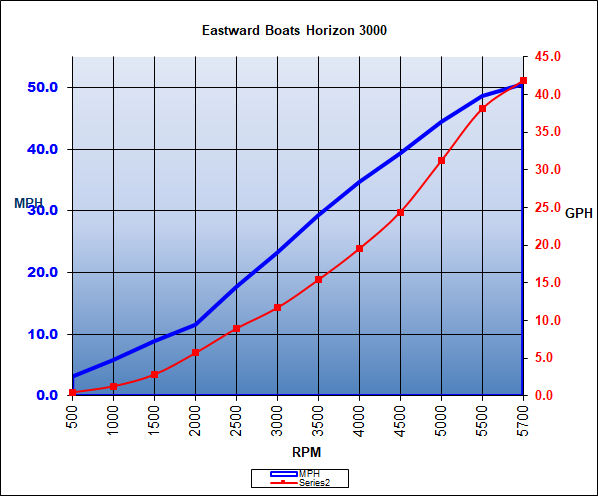
Specifications
| Length Overall | 30' 3" / 9.2 m |
|---|---|
| Beam |
9' 3" 2.83 m |
| Dry Weight |
4,000 lbs. 1,814 kg |
| Tested Weight |
7,255 lbs. 3,291 kg |
| Draft |
14" 36 cm |
| Deadrise/Transom | N/A |
| Max Headroom | N/A |
| Bridge Clearance | N/A |
| Fuel Capacity |
300 gal. 1,135 L |
| Total Weight |
7,255 lbs. 3,291 kg |
Acceleration Times & Conditions
| Time to Plane | 3.1 sec. |
|---|---|
| 0 to 30 | 5.9 sec. |
| Ratio | N/A |
| Props | 15x20 |
| Load | 5 persons, 2/3 fuel, no water, 50 lbs. of gear |
| Climate | 72 deg., 59 humid; wind: 15-20 mph; seas: <1 |
Engine Options
| Tested Engine |
2 x 250-hp Evinrude G2 |
|---|---|
| Std. Power |
2 x 300-hp |
| Opt. Power |
Not available |
Captain's Report
Contents of Report
- Mission
- Distinguishing Features
- Design
- Construction
- Bow
- Stern
- Helm
- Side Decks
- Performance
- Acceleration
- Handling
- Engines
- Included Equipment
- Base Price
- Optional Equipment
- Observations
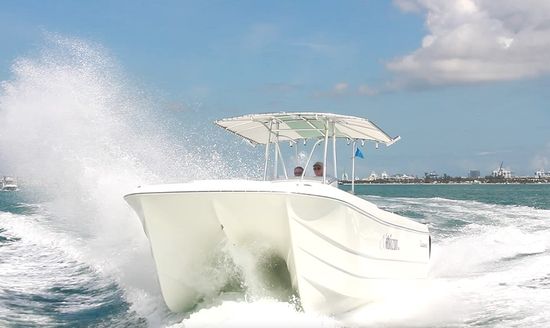
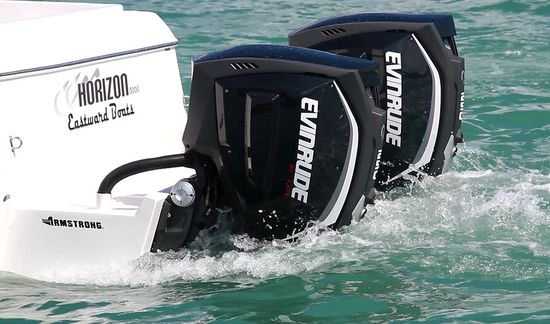
Mission
The Eastward Horizon 3000 is a versatile power cat utility boat that can be customized for fishing, diving, search and rescue, or outfitted with accommodations and A/C for overnighting.
Distinguishing Features
• High bow
• Rounded tunnel
Design
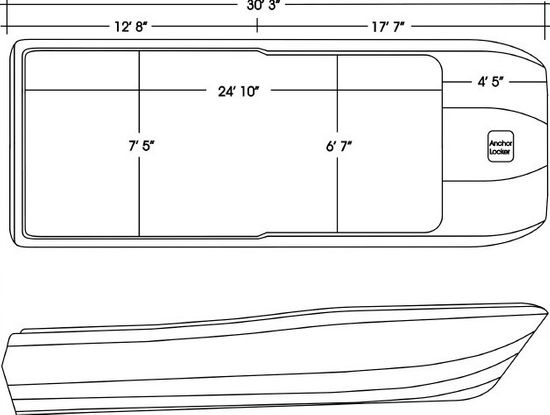
Dave East and his company, Eastward Boats, build power cats in Fort Pierce, FL. For purposes of full disclosure, Dave East worked as a Test Captain for BoatTEST.com for four years before acquiring the molds for this boat from Kevlacat, an Australian company known for building search and rescue boats. He then left BoatTEST and started Eastward Boats and has been happily building customized versions on this hull design ever since.
East brought a very basic boat to our inspection to demonstrate what he called his “Lego” approach, which is adding components to a clean canvas, bounded only by imagination and a checkbook. The boat comes in four versions: center console, two pilothouse options, and a cuddy cabin - add “Lego” options to suit. Today we are evaluating the center console version.
The hull design incorporates a high bow that can cruise at displacement speed into a steep head sea, something that most cats don’t do very well. The tunnel is also rounded for superior strength and softer landings, when compared to catamarans that have squared off tunnels. This also eliminates stress cracks in the tunnel. It is a proven hull design with a long history of providing a smooth dry ride and the strength to withstand the punishment of extreme conditions.
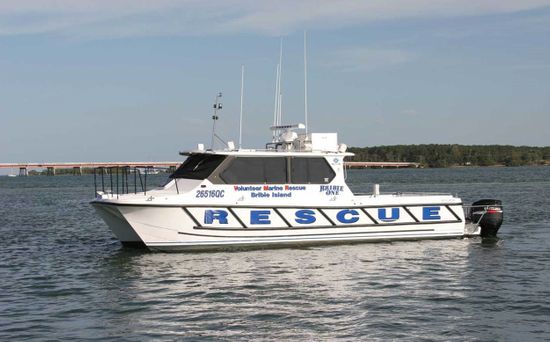
Construction
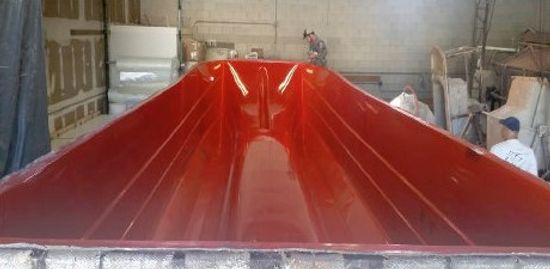
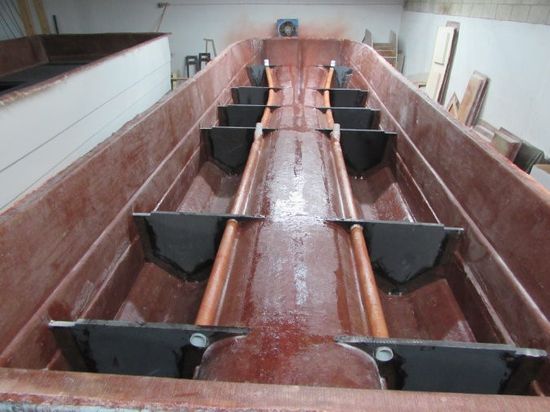
Coosa foam core is very strong and typically used only in high load areas, such as transoms, due to expense. However, Eastward has chosen to use it throughout the boat, which makes the boat very strong.
Boat Inspection
Bow
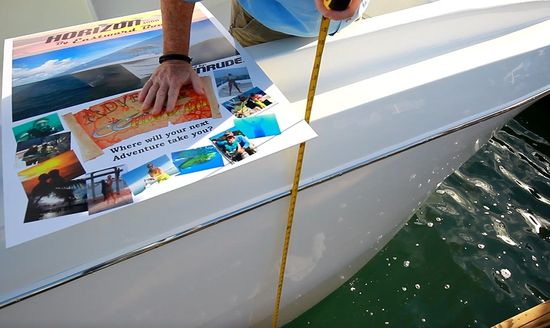
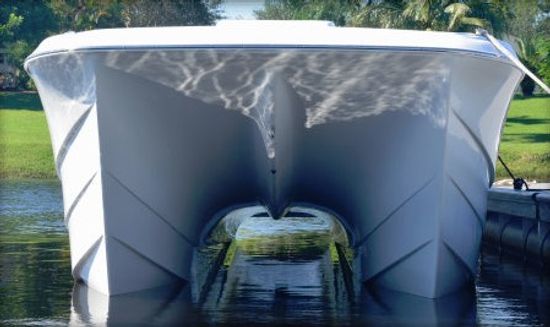
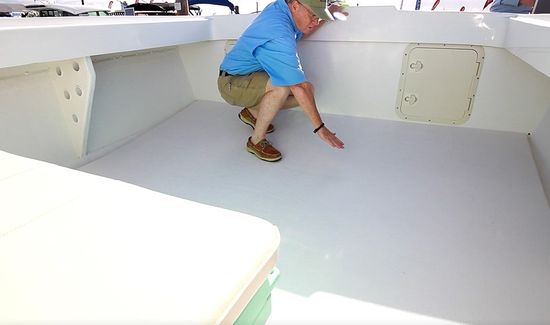
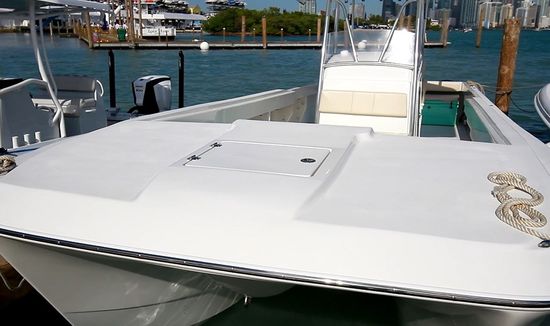
Stern
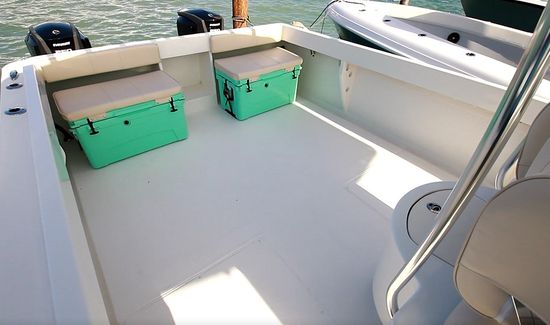
The deck behind the center console measures 8’5” W x 7’8” L (2.56 m x 2.33 m). The 96-quart (90.84 L) Nice coolers serve double duty as seats with the addition of cushions and bolsters. An aft livewell with seating is optional to replace the cooler seats.
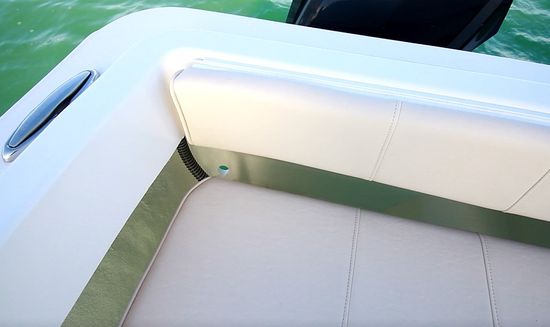
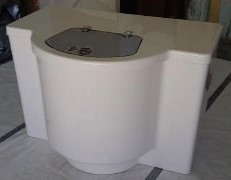
Helm
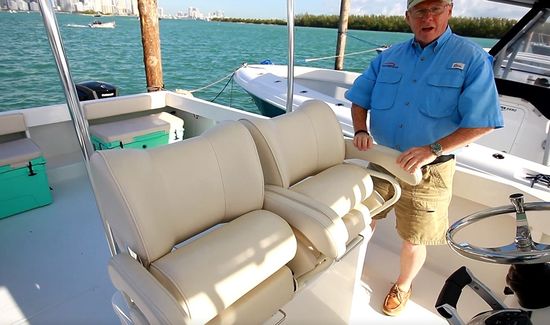
The helm chairs have flip bolsters, fixed armrests, and slide plates to adjust fore and aft. The seats can also reverse to face backwards.
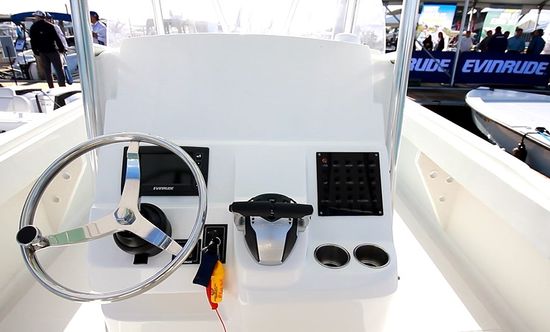
The boat has a stainless-steel wheel, offset on the left side of the console. It is on a tilt base and has a speed knob. A plexi windshield with drainage wraps the console and accessory switches with breakers are on the right. Below them are two stainless-steel drink holders with drains. A charging port is on the side of the throttles/shifter mount. Between the throttles and the wheel are ignition and start/stop switches. Above the wheel is the Evinrude engine display.
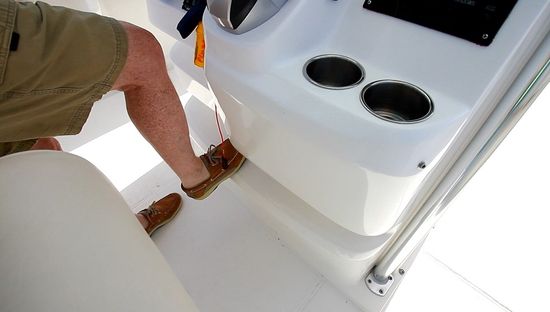
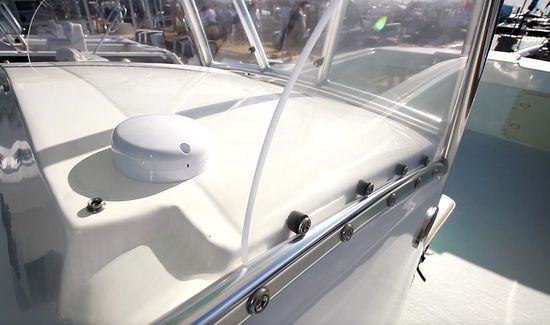
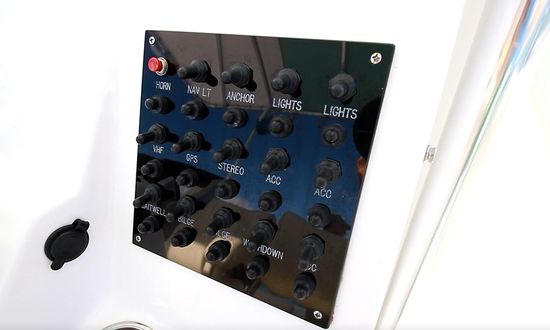
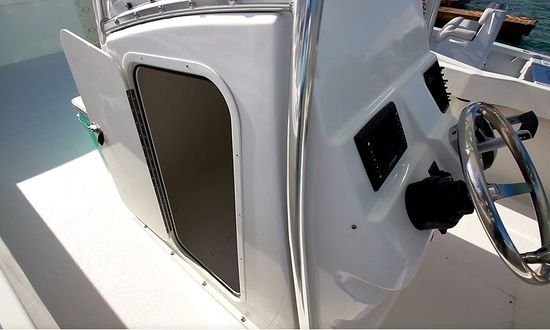
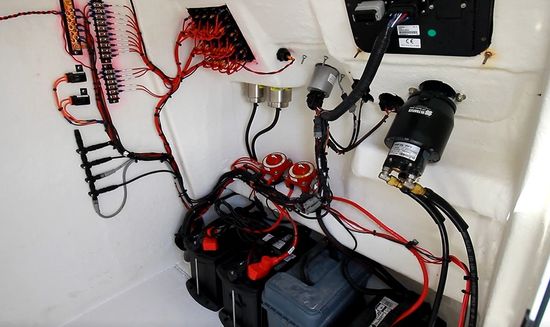
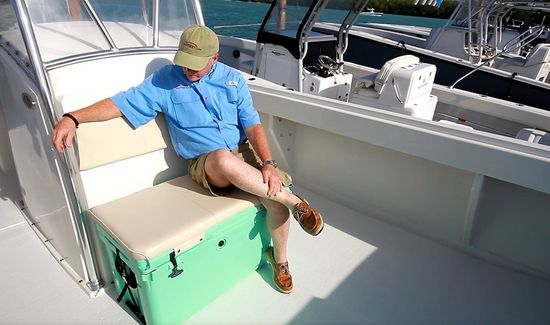
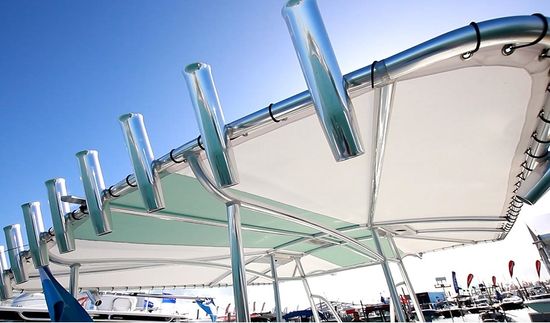
Side Decks
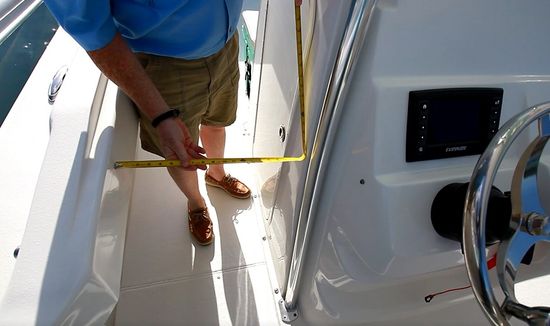
The boat has six 8” (20 cm) pull-up cleats.
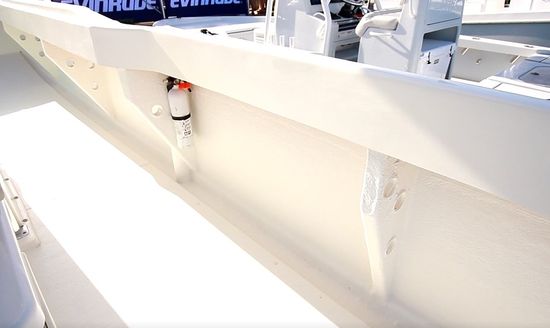
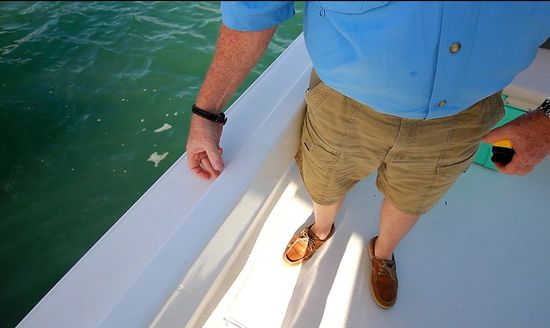
Performance
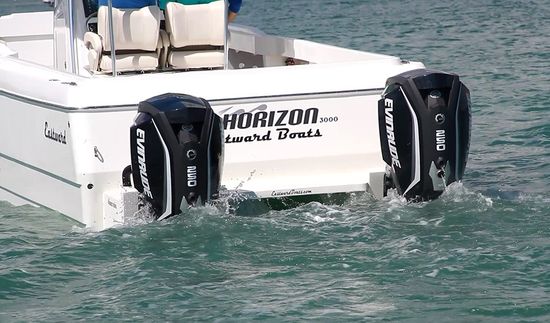
The Eastward Horizon 3000 has a LOA of 30’3” (9.2 m), a beam of 9’3” (2.83 m), and a draft of 14” (36 cm). With an empty weight of 4,000 lbs. (1,814 kg), 201 gallons (761 L) of fuel onboard, plus five people and test gear onboard, there was an estimated test weight of 7,255 lbs. (2,077 kg).
With two Evinrude E-TEC G2 250-hp gas outboards turning 15” x 20” (38 cm x 50 cm) 4-bladed stainless-steel props, the Horizon 3000 reached a top speed of 50.6 mph at 5600 rpms. The wind was blowing 15-20 knots, kicking up a light chop.
When backing off to 3000 rpm and 23.3 mph, the best fuel economy, with a burn rate of 11.7 gph and a range of 537 SM was found, all while still holding back a 10-percent reserve of the boat’s 300-gallon (1,135 L) total fuel capacity.
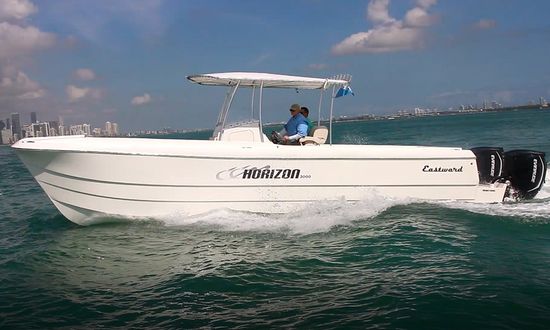
Acceleration
Time to plane was 3.1 seconds.
Zero to 20 in 3.9 seconds.
Zero to 30 in 5.9 seconds.
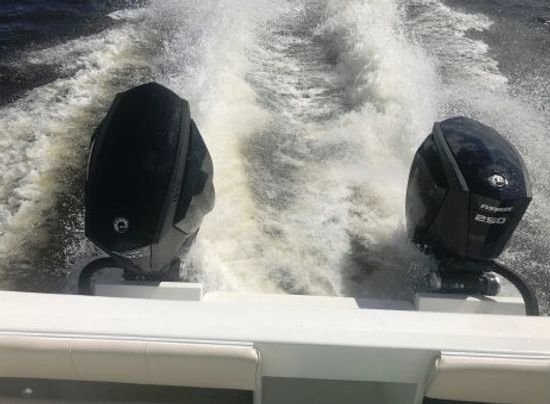
Handling
This is a fun boat to drive, with excellent handling. We didn’t get the chop we were hoping for, but we sliced right through any wakes we crossed. On acceleration, because there is very little bow rise, there is just the sensation of going faster and faster. When she turns there is a bit of an outboard lean, which we’d get used to.
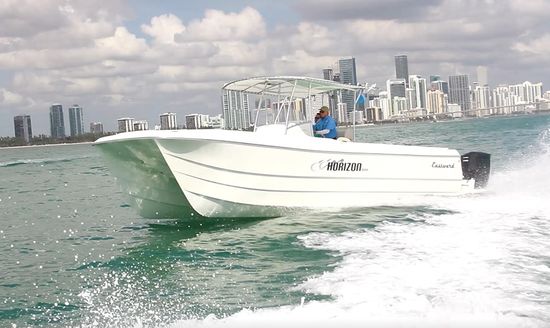
Engines and Outboard Brackets/Platform
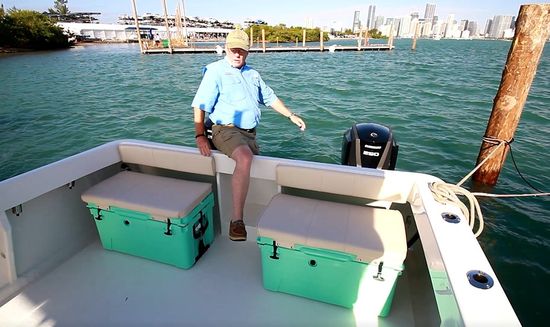
The twin 250-hp Evinrude E-TEC G2 outboard engines are mounted on Armstrong engine brackets. There are some advantages to using Armstrong brackets: they add a little floatation to the boat, they allow for a full height transom for safety and, with the full transom, some of the engine noise is blocked. These brackets are mounted to the stern with 44 stainless bolts.
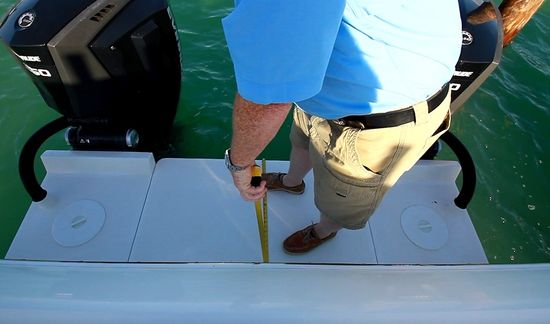
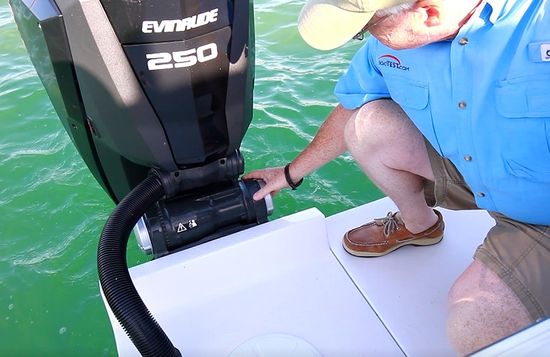
We’d like to see a boarding ladder as standard equipment on the engine platform - this test boat didn’t have one. However, there are two options available: a 4-step folding ladder for the platform between the engines or a custom dive ladder for the side of the boat.
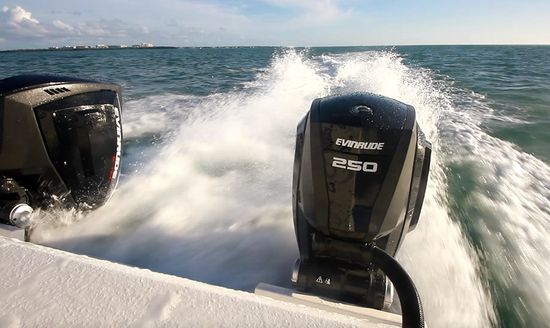
Two-stroke engines were always lighter, with less moving parts than 4-strokes. Now they can be more efficient and cleaner burning, too.
Capt. Steve once asked a boater how he liked his new Evinrude E-TECs. The boater said, “I love them.” They talked a while longer and Capt. Steve mentioned they were 2-stroke engines. “What? I had no idea,” was the concerned reply of the boater, and now he was prepared to find fault.
Like many of us, our unenlightened boater remembered why we all had a bias against 2-strokes. Back in the day they were not friendly to the environment with high emissions problems. The reason was that with carburetors, fuel was delivered to the cylinders while the exhaust ports were still open, and some fresh fuel always escaped along with the exhaust. And there was no way around it, until direct injection came along.
Today, with Evinrude E-TECs, the carburetor has been replaced by direct injection of fuel into the cylinder. Fuel is timed by a computer to reach the cylinder when the piston is on the upswing and the exhaust port is closed.
Further fuel efficiency was attained by using computational fluid dynamics to design the E-TECs. Even compared to Evinrudes one generation back, these engines have 25% more torque, 25% better fuel efficiency and half the emissions of previous Evinrude engines. The Evinrude E-TEC G2s now have a California Air Resource (CARB) Rating of three stars for Ultra-Low emissions.
Well, these aren’t your father’s 2-strokes. Evinrude has completely flipped the script with technological improvements. Time to let old 2-stroke biases die and get onboard with today’s better engines.
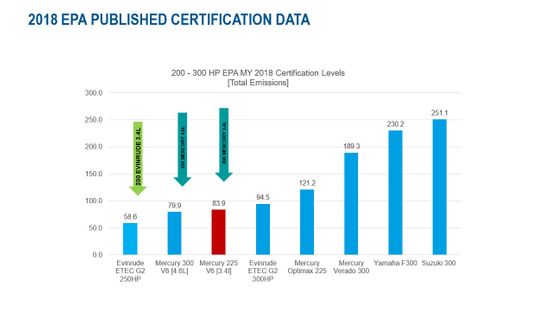
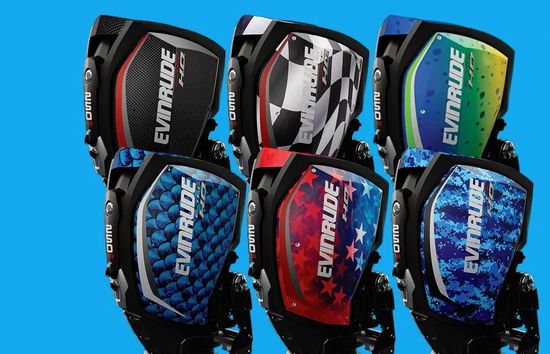
Equipment included on the Eastward Horizon 3000:
• Fuel tanks
• Fuel filters
• 5-spoke wheel
• Switch panel w/breakers and 12V outlet
• 2 – battery switches
• 2 – 800 gph automatic bilge pumps
• LED Running lights
• Heavy duty rubrail w/ss insert
• 6 flush mounted rod holders
• 6 – 8” (15 - 20 cm) SS through-bolted cleats
• SS ½” bow and stern eyes
• Armstrong outboard brackets with swim platform
Base Price
$127,700 as seen with center console, baitwell w/dual helm seats, canvas T-top, and twin 250-hp Evinrude E-TECs.
Optional Equipment (includes installation):
• Engine upgrade to 300-hp Evinrude E-TECs ($4,115)
• Magic Tilt Aluminum tandem axle trailer ($8,650)
• Fiberglass hard top ($3,900)
• Lee Sidewinder outrigger bases ($1,295)
• Lee 18.5” (47 cm) alum outrigger poles ($995)
• Lee 20’ (6 m) Telescoping carbon fiber outriggers ($1,045)
• Freshwater washdown with 9-gallon (34 L) tank ($760)
• Saltwater washdown ($715)
• Fiberglass coffin box ($3,510)
• Walk-through transom ($1,900)
• Folding stern jump seat ($775)
• Stern baitwell ($1,100)
• In-deck storage box ($1,100)
• In-deck Insulated fish box w/macerator ($1,529)
• Porta-Potti ($189)
• Hull colors (TBD)
• Custom electronics package (TBD)
• Anchor windlass w/roller davit ($2,195)
• Armstrong 4-step swim ladder ($495)
• Custom alum dive ladder ($2,690)
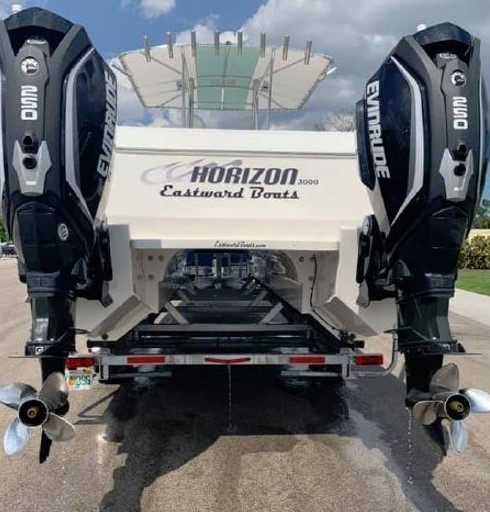
Observations
The Eastward Horizon 3000 handles well and it can be configured to maximize its purpose. We recommend the additional in-deck storage options to supplement storage.
This boat has a range of 537 miles with the stock 300-gallon (1,135 L) fuel tank, meaning one can go from Florida to the Bahamas for a weekend and back without having to buy fuel in the Bahamas.
